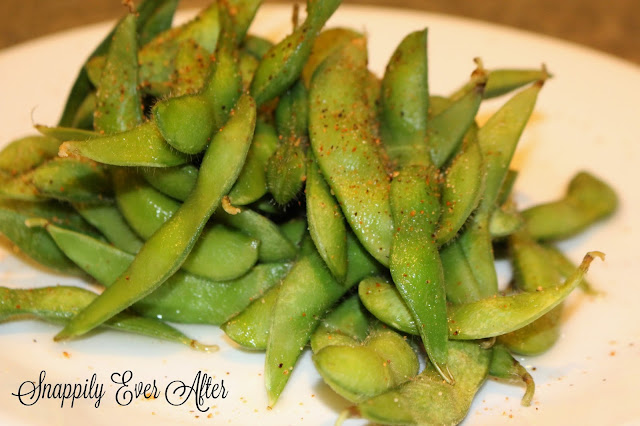A while back Edamame was something that few people had heard of on a regular basis and almost nobody made at home. It was served as an appetizer at fancy Japanese restaurant. Joseph and his boys used to eat at his sister's restaurant often and they absolutely love them.
They are available at all the grocery store freezer aisles and lots of them even have them fresh. Edamame is as common as peas and carrots, sold in 12-ounce or 1-pound plastic bags and sold cheap.
So cheap that for four or five bucks you can buy a pound of organic edamame, and for considerably less than that, a pound of non-organic. Since I figure you’re getting a quarter-pound or less when you order them at a restaurant, and paying (no doubt) up to seven bucks per serving, this alone should be an incentive to buy a bag.
The cooking, at least for the style in which they’re served in restaurants, is along the lines of “duh.” Boil, drain, salt, serve. Literally, that’s it. Keep the cooking time short and use coarse salt. I can think of no other tricks.
There are ways to use edamame that go beyond the dead simple. One is to simply drizzle them with good soy sauce, a bit of lemon or sesame oil, or all three, and serve as usual.
Other ideas, all of which are essentially garnishes to be used alone or in combination with the above treatments (these are all good whether the beans are still in or taken out of their shells):
• Toast sesame seeds in a dry skillet until they pop, and sprinkle them over the top.
• Add a few chiles or a squeeze of sriracha to the heating oil and drizzle that.
• Use a few drops of rice vinegar in place of lemon juice.
• Toast nori (dry, in the oven or a skillet) and crumble that over the beans; mix and serve quickly.
• Chop peanuts or walnuts (toast first if necessary, until lightly browned) and sprinkle on top.
• Sweat a little minced ginger or garlic, or both, in peanut oil and toss with the cooked beans.
• Grate lemon zest over all.
• Top with chile powder, curry powder, pimentón (smoked paprika), five-spice powder or, perhaps best, shichimi (the Japanese spice mix also called togarashi).





